- The Moneycessity Newsletter
- Posts
- 3 (Insane) NEW Ways to Invest Using ChatGPT
3 (Insane) NEW Ways to Invest Using ChatGPT
AI is revolutionizing investing in 2025, giving those who adapt an edge and leaving others behind - understanding why this matters could define your financial future.
3 (Insane) NEW Ways to Invest Using ChatGPT
AI is revolutionizing investing in 2025, giving those who adapt an edge and leaving others behind — understanding why this matters could define your financial future.
I went down the rabbit hole after I saw an article found that ChatGPT is on par with professional financial analysts. And it’s only going to get smarter so I’m on a mission to get ahead of the curve.
I bought the premium version and have been experimenting with it for a few weeks now, and I’ve come up with some tools that accelerate and improve my process for finding strong companies to invest in.
There are 3 ways that I’m using AI to invest this year.
Watch the extended version HERE.
1. Brainstorming Investment Ideas
Hedge funds like Vanguard and BlackRock are leveraging AI, especially Large Language Models (LLMs), to analyze massive amounts of data for investing. LLMs specialize in understanding written language by learning patterns from huge datasets. Think of them as hyper-specialized assistants trained for different tasks. Some firms use AI to identify market trends and opportunities, giving them a major edge.
For everyday investors, ChatGPT is like having that same kind of assistant — but it’s affordable. It’s insanely fast, running on a supercomputer with enough power to drive a Tesla around the Earth 26 times a year. At just $20/month, you’re getting a tool that can brainstorm and analyze data faster than any human.
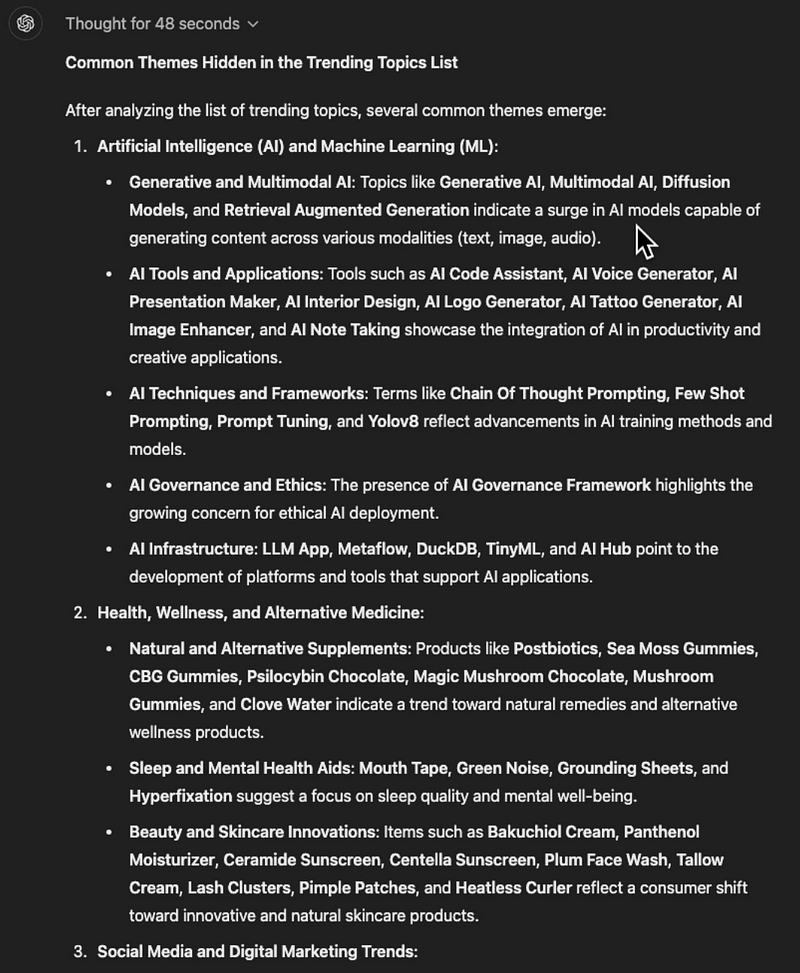
Here’s how I use it: when researching growth companies, I start with trending topics in the U.S. and then paste a list of trends into ChatGPT and ask it to identify common themes and the companies best positioned to benefit. Within a minute, I get categorized insights — AI companies, health tech, renewable energy, and more — along with investing implications. It’s not a final decision, just a starting point for deeper research.
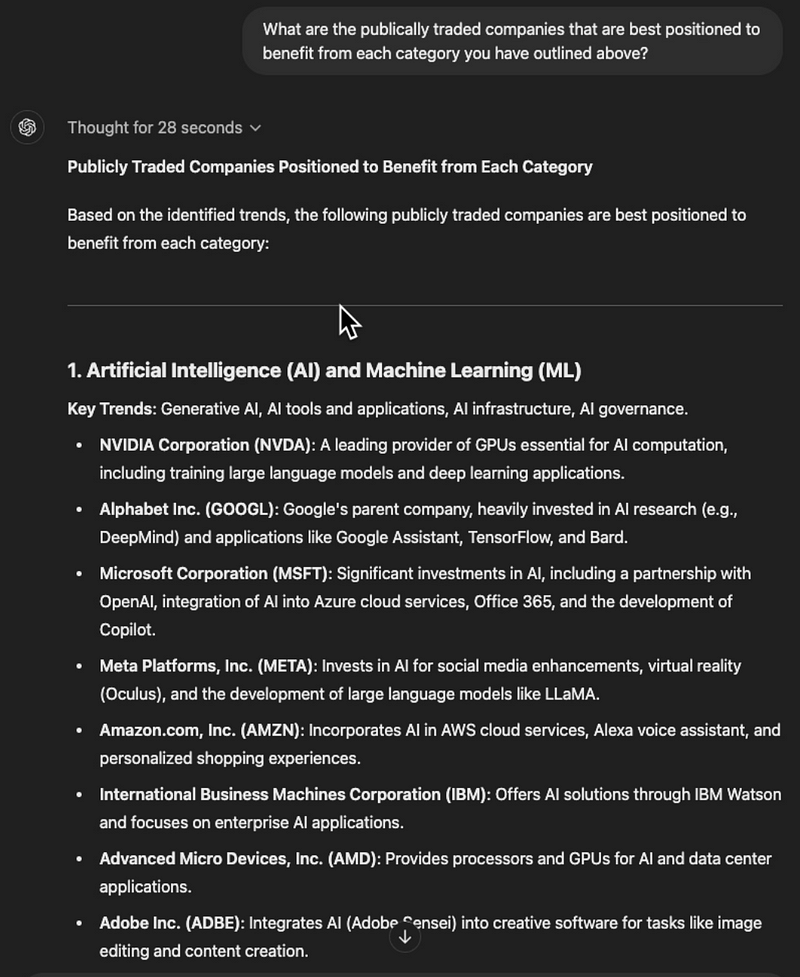
For value companies, I use stock screeners to narrow the list. My favorite is StockAnalysis.com. A value company has a low share price compared to its profits, like finding a great deal at the store. But not every deal is worth it — some companies are struggling for good reasons. That’s where ChatGPT helps. I ask it to analyze the qualitative aspects behind the numbers: is the sector strong? Are there risks the screener can’t detect?
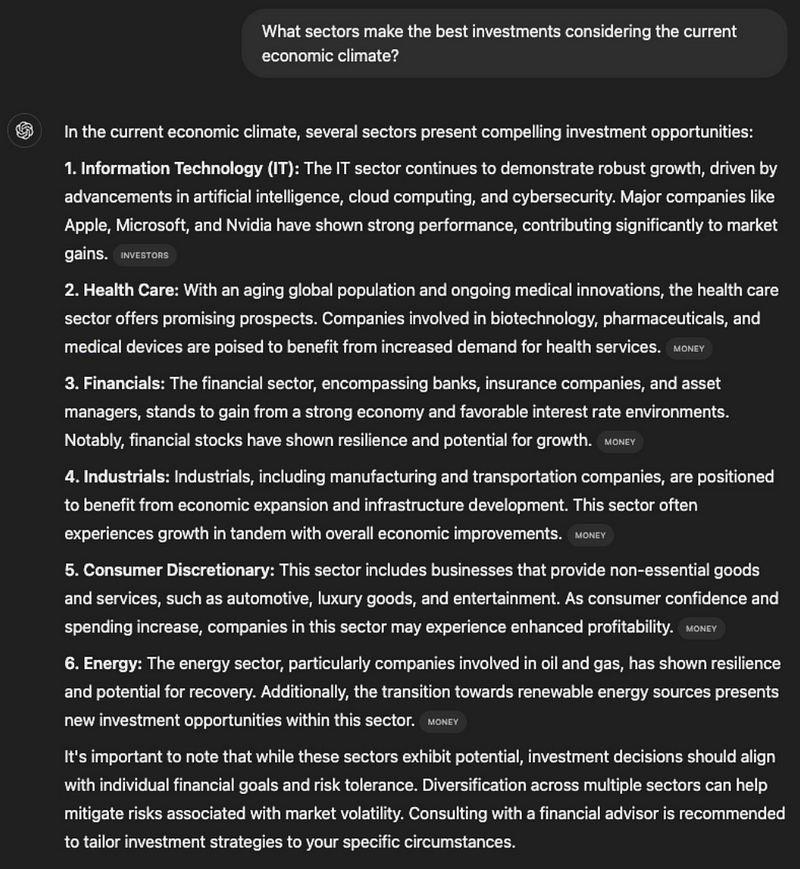
When screening consumer discretionary companies (luxury goods, entertainment), I filter for those with over $1B market caps, solid revenue growth, and strong free cash flow. ChatGPT helps me figure out which of the shortlisted companies are financially solid and positioned to thrive.
Combining tools like screeners and ChatGPT makes the research process smarter and faster, especially for spotting both trends and bargains.
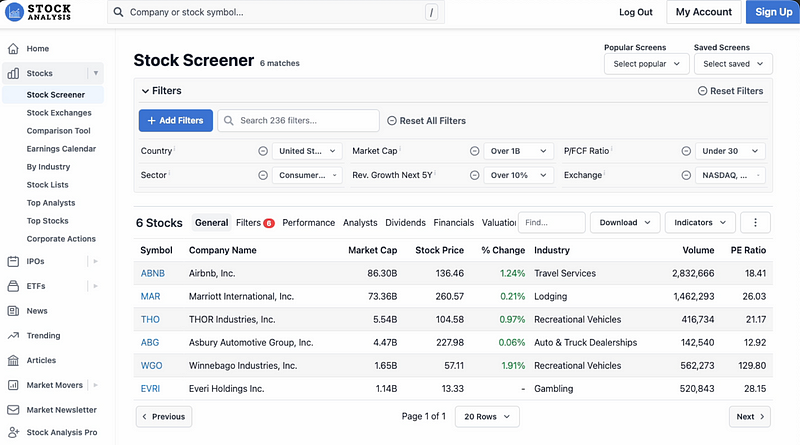
2. Screening for Value Companies
Here’s where my second AI tool comes in handy — Stock Analysis GPT.
It’s tailored for analyzing financial data, which is perfect when I have a list of 5–6 companies from my stock screener. Instead of wasting hours digging through financial reports, I use this tool to quickly rank these companies based on financial health.
I take the stock tickers, feed them into Stock Analysis GPT, and ask it to rank the companies based on growth potential. Within minutes, I get a ranked list of Marriott and Airbnb at the top and Everi Holdings and Winnebago at the bottom.
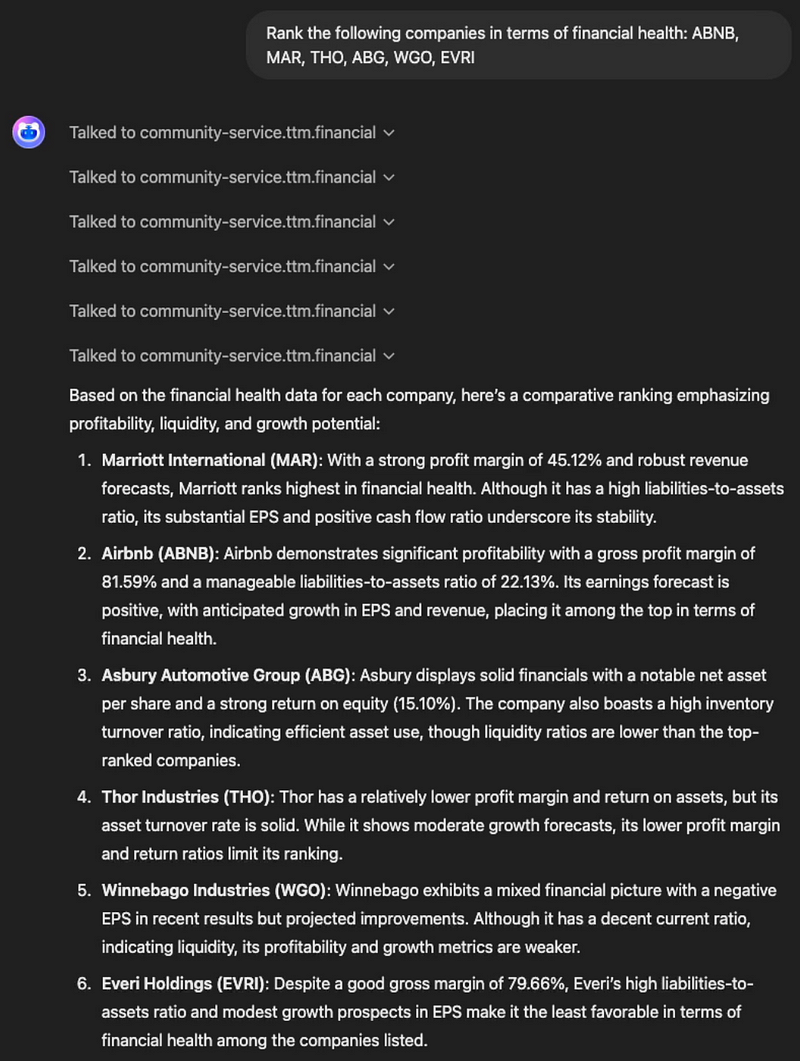
This process lets me cut the weakest options without diving deep into all six companies. It saves so much time, letting me focus only on the most promising investments.
When I’ve narrowed it down to a couple of companies, I like to go all-in by diving into their financials, putting data into Excel, and creating detailed charts to visualize their performance. It’s a time commitment, but by the time I get here, I’m only analyzing the best of the best.
3. Company Intrinsic Value Analysis
This is where my third AI tool steps in — Excel ChatGPT. I like it for digging into financial data without getting overwhelmed.
Here’s how I use it: When I want to analyze Marriott’s financials, I start by heading to StockAnalysis.com and grabbing their financial data from the past 10 years by using bulk download.
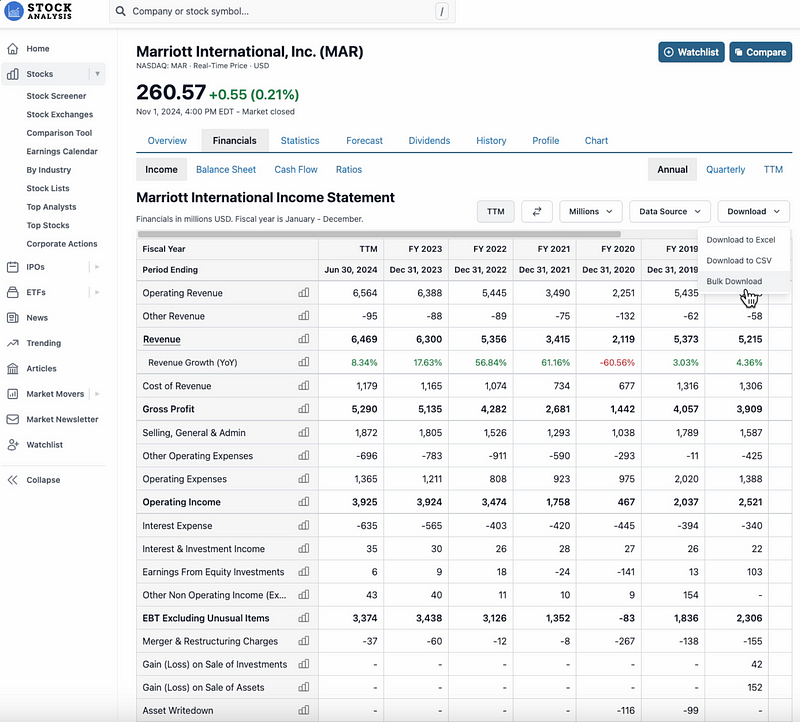
After uploading the data, I asked it to plot Marriott’s free cash flow for the last five years, fit a trendline, and calculate the average annualized growth rate using the endpoints of that trendline. This might sound complicated, and most people wouldn’t even attempt it. ChatGPT Excel handles it in under a minute. The result? Marriott’s free cash flow has been growing by an impressive 30% per year over the past five years.
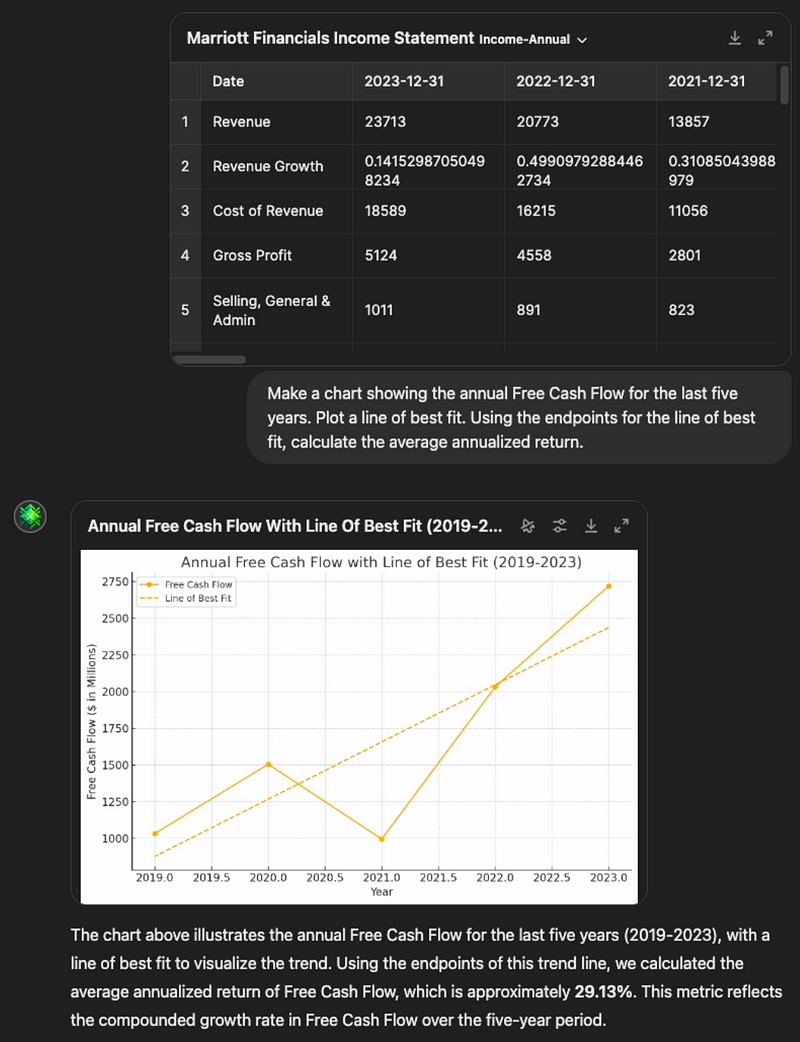
It gets even better — I can use the same process to analyze Airbnb or any other company and even create side-by-side comparisons for key metrics. Whether it’s profit, revenue growth, or cash flow, this tool simplifies everything.
It might seem like a lot of moving parts, but this setup pulls everything together. From spotting trends to narrowing down companies to diving deep into financials, these tools work seamlessly to save time and deliver actionable insights.
If you want to see me run through my actual process using AI from ideating to picking a company to invest in, check out this video HERE.
Cheers!


Reply